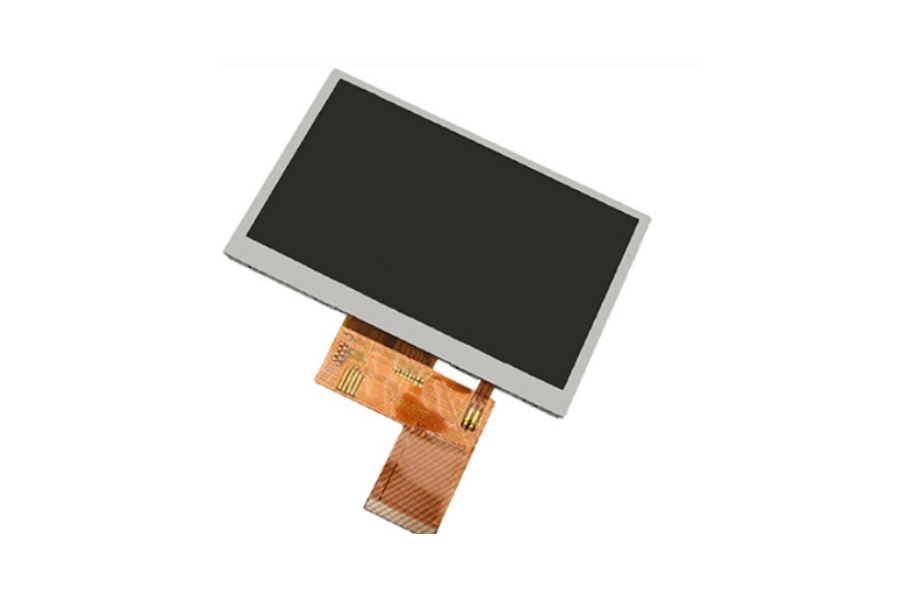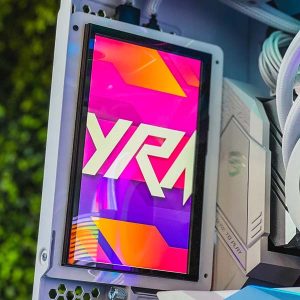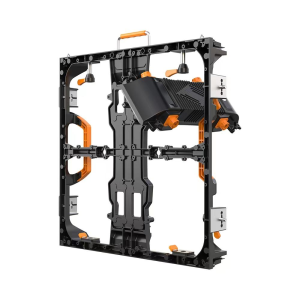In today’s digital age, LCD displays can be found everywhere, from the mobile phones and tablets we use daily to computer monitors and televisions. With its stable performance and mature technology, it has become one of the most widely used display devices, profoundly influencing people’s lives and work. So, what exactly is an LCD display? What are its unique features?

What is an LCD Display?
An LCD display, short for Liquid Crystal Display, is a flat – panel display technology that uses liquid crystal materials as the display medium. Liquid crystal is a substance between solid and liquid states, possessing unique optical properties. In an LCD display, liquid crystal molecules are sandwiched between two glass substrates. By controlling the alignment of liquid crystal molecules, the light transmittance is changed, thus realizing image display. When an electric field is applied to the liquid crystal molecules, their alignment changes, and the polarization direction of light changes accordingly. Through the cooperation of color filters and backlights, the colorful images we see are finally presented. The entire display process relies on precise circuit driving and signal control to ensure the clarity and stability of the image.
Characteristics of LCD Displays
High Resolution and Clear Display: It can provide high resolutions, ranging from the early standard definition to today’s Full HD (1920×1080), 4K (3840×2160), and even 8K (7680×4320) resolutions, meeting the needs of different users for picture clarity. Whether watching high – definition movies, engaging in professional graphic design, or browsing the web, it can present delicate and realistic images. The text edges are clear and sharp, and the color reproduction is high, providing users with a high – quality visual experience.
Low Power Consumption and Energy – Saving: Compared with some other display technologies, LCD displays have relatively low power consumption. Liquid crystal itself does not emit light but controls the light transmittance of the backlight to display images, consuming less electricity during operation. The low – power – consumption feature not only reduces the usage cost but also helps to reduce energy consumption, conforming to the concept of environmental protection and energy – saving. It is especially suitable for devices that need to be used for long periods, such as laptops and tablets.
Thin, Lightweight, and Portable: Thanks to its flat – panel display structure and advanced manufacturing processes, LCD displays can be made very thin and lightweight. This makes devices equipped with LCD displays, such as mobile phones and tablets, more portable. The thin and light design not only enhances the aesthetic appearance of the device but also reduces its weight, allowing users to use it anytime and anywhere, meeting the modern people’s pursuit of convenient living.
Stable and Reliable: After years of development and technological iterations, LCD display technology has become very mature, with high stability and reliability. It has a long service life and can work stably for a long time under normal usage conditions, being less prone to malfunctions. This has given products using LCD displays a good reputation in the market. Users do not need to replace the display frequently, reducing usage risks and costs.
Applications of LCD Displays
Consumer Electronics Field: It is widely used in consumer electronics products such as mobile phones, tablets, and laptops. On mobile phones, the LCD display provides users with a clear screen for browsing information, watching videos, playing games, etc. The large – screen LCD display of tablets is suitable for reading e – books, watching movies and TV shows, and mobile office work. The LCD display of laptops meets users’ needs in various aspects such as office work, learning, and entertainment, becoming an indispensable part of people’s daily lives.
Television Field: It was once the mainstream display technology in the television market. Although it now faces competition from new display technologies such as OLED, it still holds a certain market share. LCD TVs are favored by many families due to their high cost – performance ratio, large – size display, and stable performance. Whether watching cable TV programs, playing high – definition Blu – ray movies, or connecting to game consoles for gaming, LCD TVs can provide an excellent visual experience.
Commercial Display Field: In the commercial field, LCD displays are also widely used. For example, the electronic billboards in shopping malls and supermarkets use LCD displays to show product information, promotional activities, etc., attracting the attention of customers. The information displays in public transportation hubs are used to display flight and train schedules, facilitating passengers’ travel. The self – service terminals in banks, hospitals, etc., also use LCD displays to provide users with operating interfaces and information display.
Precautions for LCD Displays
Avoid Displaying Fixed Images for Extended Periods: If an LCD display shows a fixed image for a long time, it may cause the liquid crystal molecules to age, resulting in a “ghosting” phenomenon, which affects the display effect. Therefore, during use, try to avoid displaying the same image for an extended period, especially for static images or text. You can appropriately set a screen saver or automatically switch the display content.
Pay Attention to the Usage Environment: LCD displays have certain requirements for the temperature and humidity of the usage environment. Excessively high or low temperatures and high humidity can affect the performance and lifespan of the display. In high – temperature environments, the display may experience image distortion and color deviation. In humid environments, it may cause internal circuit short – circuits. Therefore, place the LCD display in an environment with suitable temperature and humidity, and avoid direct sunlight and strong magnetic field interference.
Regularly Clean the Screen: The screen surface is prone to attracting dust and stains, affecting the display effect and aesthetics. Regularly clean the screen with a special screen cleaner and a soft cleaning cloth to maintain the screen’s clarity and brightness. When cleaning, pay attention to using moderate force to avoid scratching the protective film on the screen surface.
Prices of LCD Displays
The price of LCD displays is affected by factors such as size, resolution, panel type (TN, IPS, VA, etc.), backlight technology (CCFL, LED, etc.), brand awareness, display color and contrast performance, refresh rate, and whether it is a special customization (such as high – reliability screens for industrial use). If you want to know more specifically, you can consult KSSDISPLAY. Our experienced staff will communicate with you and provide you with a detailed inquiry and quotation experience.
About Us
KSSDISPLAY is a professional integrated solution provider for LED displays. We are engaged in the research, sales, and service of Harley Di fixed LED displays, outdoor fixed – billboard LED displays, indoor and outdoor rental LED displays, and LCD displays. We offer a wide variety of indoor transparent LED screens. If you are interested, you can contact us for inquiries and price quotes.





